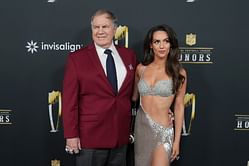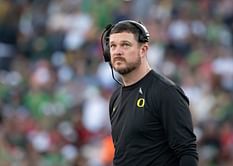
When one thinks of college football, the University of Oregon's vibrant and successful football program immediately comes to mind. Yet, Oregon Duck history is a tale that stretches back to the late 19th century, filled with intriguing stories of evolution and transformation.
The University of Oregon, nestled in the picturesque state of Oregon, was established in 1876. While renowned today for its academic excellence and picturesque campus, it was not until 1894 that the university first fielded a football team. The Ducks' presence on the gridiron marked the beginning of a journey that would see them rise to national prominence.
The Ducks have consistently been a force to be reckoned with in the college football world. Their journey to prominence reached its zenith in the 2010s when they became known for their on-field excellence. Multiple conference championships, Rose Bowl victories, and appearances in the College Football Playoff cemented their status as a football powerhouse. Their unique and ever-changing uniform style also garnered attention, making them trendsetters in the world of collegiate athletics. Now, let's delve deeper into the Oregon Duck history.
Oregon Duck history
The journey to becoming the Oregon Ducks was a gradual transformation from their original moniker, the "Webfoots." This term had historical significance, harking back to a group of Revolutionary War heroes from Massachusetts who later settled in Oregon's Willamette Valley in the 19th century.
In 1926, a naming contest and a subsequent student vote officially christened them the "Webfoots." However, it wasn't until the 1920s that ducks, with their distinctive webbed feet, began to be associated with the team. The adoption of the shorter "Duck" nickname by journalists and a live white duck named "Puddles" appearing at sporting events marked a shift in identity.
Connection with Disney
One of the most captivating aspects of the Oregon Duck history is their unique relationship with the world of animation, particularly Disney's Donald Duck character. Beginning in 1940, images of Puddles began to resemble Donald Duck, catching the attention of Walt Disney himself. An informal handshake agreement between Oregon's athletic director and Disney allowed the university to use Donald Duck as its sports mascot, naming him "Donald Duck."
This arrangement, backed by a photograph of Disney and Oregon's athletic director wearing matching jackets with the Oregon Donald logo, led to a formal agreement in 1973. This agreement granted the university the right to use Donald's likeness for Oregon sports, with Disney retaining control over the mascot's appearances.
In 2010, Disney and the university revised their agreement, permitting the Oregon Duck mascot to make more public appearances and participate in college mascot competitions, while the mascot's graphic art representation remained under the trademark agreement.
Controversy
No journey is complete without its share of controversy. In 2007, the Oregon Duck found itself embroiled in a humorous yet memorable altercation with the Houston Cougars' mascot, Shasta, following a routine of push-ups. The incident went viral, further solidifying the Oregon Duck's place in college football lore.
Additionally, a viral video titled "I Love My Ducks" created by students in 2009 was initially removed from YouTube due to the Disney agreement. However, it gained such popularity that it was later featured at a pivotal Ducks game.
FAQ on Oregon Ducks Mascot History
A. The University of Oregon first fielded a football team in 1894, marking the inception of their football program.
A. The Oregon Ducks football program boasts several major achievements, including multiple conference championships, Rose Bowl victories, and appearances in the College Football Playoff. Their success in the 2010s solidified their reputation as a football powerhouse.
A. The Oregon Ducks gained recognition for their on-field excellence during the 2010s, with multiple conference championships, Rose Bowl victories, and appearances in the College Football Playoff, establishing them as a football powerhouse.
A. The transformation from the "Webfoots" to the "Ducks" was gradual. While officially named the "Webfoots" in 1926, it wasn't until the 1920s that ducks and their distinctive webbed feet became associated with the team. Journalists and a live white duck named "Puddles" played key roles in this shift.









